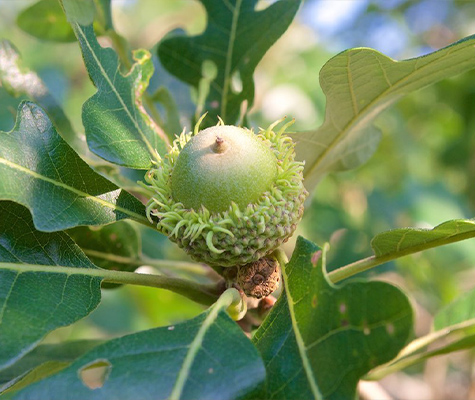Bur Oak
Quercus macrocarpa
Overview
The Bur Oak is a North American timber tree that belongs to the beech family. Its main home is throughout the central United States. Its a very popular shade tree due to its resistance to inset and fungal infestations, droughts, and pollution. These trees typically reach around 80 feet tall but can grow up to 164 feet! Its corky bark also makes this tree very strong against fire. Its leaves are around 10 inches long and dark green. The Bur Oak is also called a mossy-cup because of the fringe on its acorn cups.
Cultivation
The Bur Oak tree prefers full sunlight for growth. It prefers alkaline, dry, moist, well-drained soil. It can also tolerate the occasional drought or flooding. The tree grows at a slow to moderate rate.
Biodiversity Sustained
Bur Oaks provide homes for a large variety of local animals. Its large limbs make perfect spots for squirrels and birds of all sizes to nest. The acorns can be eaten by birds, squirrels, and all other kinds of woodland creatures. Native Americans used to use Bur Oak as medication for heart problems. The acorns if prepared properly can even be used as a coffee subsitute!
On Xavier's Campus, over the Next 20 Years, this Tree will:
Stormwater Runoff Intercepted: 7,785 Gallons
CO2 Reduction: 1,195 lbs
Environmental Benefits (in US dollars): $298
